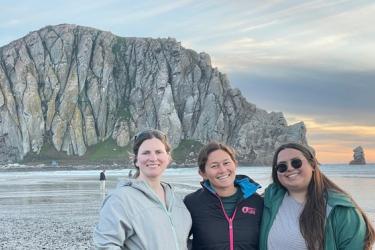Phytoplankton fuel entire marine food webs; but not all phytoplankton are created equal. Phytoplankton species composition matters to fish and other organisms higher in the marine food web, including humans. Some phytoplankton are more nutritious than others and are strong determinants of fish production, whereas others are harmful and can kill fish or contaminate seafood with potent toxins. One group of phytoplankton, the diatoms, are key sources of essential fatty acids and strong determinants of fish production. This well-known relationship led Bostwick Ketchum to revise Isaiah 40:6 this way, "All fish is diatom." There is one diatom, however, that we need to watch out for --Pseudo-nitzschia. This is the toxic critter responsible for shutting down the West Coast Dungeness crab fishery in 2015, causing millions of dollars in losses.
It can be prohibitively labor intensive to sample, count and identify phytoplankton species or species groups using conventional light microscopy. Because of this, marine phytoplankton communities are often approximated using chlorophyll observations from satellites; but chlorophyll tells us little about the quality of phytoplankton available to support fisheries and cannot identify harmful algal blooms. Luckily, technological advancements can help...Enter the Imaging Flow CytoBot, or IFCB for short!
The IFCB is an automated imaging flow cytometer that generates images of fluorescent particles taken from the marine environment-- essentially, it is robot that continuously monitors phytoplankton while the NOAA Ship Bell M. Shimada is underway, generating on the order of 30,000 images per hour. Automated taxonomic identification of images is conducted using a machine learning algorithm (think facial recognition software) to the genus or even species level with demonstrated accuracy comparable to that of human experts. We are trialing the IFCB during Legs 3 and 4 of the NWFSC Summer Survey to map the distribution and abundance of phytoplankton functional groups that are thought to be more nutritious for fish, as well as any harmful algal blooms. By piloting this technology and its integration into the Summer Survey, we hope to learn more about environmental conditions and food web dynamics that can impact fisheries and coastal communities, and we think that is pretty cool!




